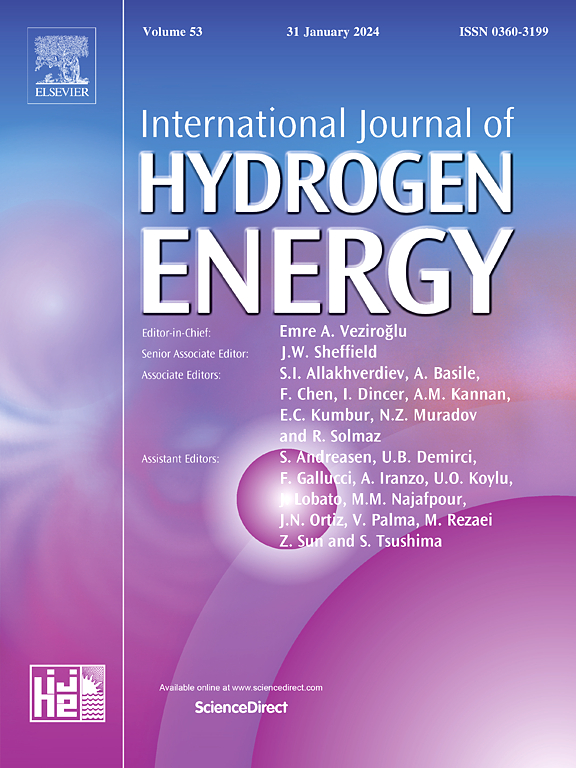Stabilizing and accelerating the hydrogen evolution reaction of well-designed Pt nanoparticle with single atomic iron sites
IF 8.1
2区 工程技术
Q1 CHEMISTRY, PHYSICAL
引用次数: 0
Abstract
To solve the stability of Pt nanoparticles in Pt-based electrocatalysts, herein we demonstrate an electrocatalyst (Pt/FeSA-NC) featuring with Pt nanoparticles deposited on Fe single-atom nitrogen-doped carbon, which was realized by the pyrolysis and subsequent wet chemical reduction approach. The as resultant Fe single-atom nitrogen-doped carbon exhibits delicate dodecahedral structure with uniformly distribution of Pt nanoparticles which provide suitable surrounding environment for Pt nanoparticles and enable the intense interaction between atomic Fe and Pt. Electrochemical results shows a superior activity with overpotentials reaching up to 19 mV and 189 mV, respectively at current densities of 10 and 100 mA cm−2, outperforming commercial Pt/C (27 mV and 229 mV) in alkaline conditions. DFT calculations revealed a nearly thermal neutral ΔGH∗ value of −0.360 eV of Pt/FeSA-NC, therefore, reducing the energy barrier and ensuring an accelerated reaction thermodynamics. This research offers a new approach to resolve the stability challenges of Pt-based electrocatalysts and advances the advancement of highly efficient electrocatalysts.

稳定和加速单原子铁位Pt纳米粒子的析氢反应
为了解决Pt基电催化剂中Pt纳米颗粒的稳定性问题,本文通过热解和随后的湿化学还原方法,将Pt纳米颗粒沉积在Fe单原子氮掺杂碳上的电催化剂(Pt/FeSA-NC)。结果表明,在10和100 mA cm−2的电流密度下,Fe单原子氮掺杂碳的过电位分别达到19 mV和189 mV,具有优异的活性,且纳米Pt粒子均匀分布,为纳米Pt粒子提供了合适的周围环境,并使铁原子与Pt原子之间具有强烈的相互作用。在碱性条件下优于商用Pt/C (27 mV和229 mV)。DFT计算显示Pt/FeSA-NC接近热中性ΔGH∗值为−0.360 eV,因此,降低了能量垒并确保了加速反应热力学。该研究为解决pt基电催化剂的稳定性挑战提供了新的途径,并推动了高效电催化剂的发展。
本文章由计算机程序翻译,如有差异,请以英文原文为准。
求助全文
约1分钟内获得全文
求助全文
来源期刊

International Journal of Hydrogen Energy
工程技术-环境科学
CiteScore
13.50
自引率
25.00%
发文量
3502
审稿时长
60 days
期刊介绍:
The objective of the International Journal of Hydrogen Energy is to facilitate the exchange of new ideas, technological advancements, and research findings in the field of Hydrogen Energy among scientists and engineers worldwide. This journal showcases original research, both analytical and experimental, covering various aspects of Hydrogen Energy. These include production, storage, transmission, utilization, enabling technologies, environmental impact, economic considerations, and global perspectives on hydrogen and its carriers such as NH3, CH4, alcohols, etc.
The utilization aspect encompasses various methods such as thermochemical (combustion), photochemical, electrochemical (fuel cells), and nuclear conversion of hydrogen, hydrogen isotopes, and hydrogen carriers into thermal, mechanical, and electrical energies. The applications of these energies can be found in transportation (including aerospace), industrial, commercial, and residential sectors.
 求助内容:
求助内容: 应助结果提醒方式:
应助结果提醒方式:


